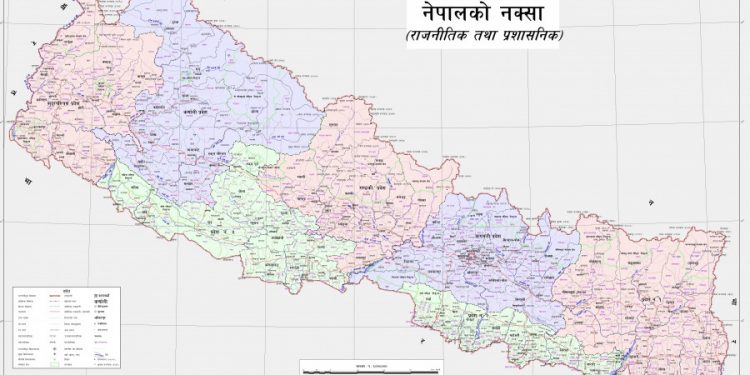India is as good as losing what was once its closest ally in the region, Nepal. The process of distancing is not new, though. Prime Minister Sharma Oli releasing a new map of Nepal – which included Kalapani, Limpiyadhura and Lipulekh in its fold – is also his bold attempt to take on India. The Indian side is of the view that Oli is mainly playing domestic politics – aiming to salvage his diminishing popularity and outwit two of his political rivals in the party – ex-PMs Prachanda and Madhav Kumar. There, however, is reason to suspect that there could be more on Oli’s mind.
A standoff with Nepal was in the coming. As India released a map of the region after the division of former Jammu and Kashmir state into Union Territories and Ladakh as one UT in August last, Nepal had raised a protest. It alleged that some of its regions were included as part of India. India building an 80-km road to Lipulekh to help in the pilgrimage to Manas Sarovar too raised a row between the two nations.
India-Nepal ties were inseparable in the past. It was the only Hindu kingdom till recently and Nepal’s secondary royal families were directly linked to many of the princely families in India. Monarchy is old story now and Communists have become the principal rulers of Nepal in recent years. This also meant China increasingly having a finger in the Nepal pie with several economic lures being extended to the Himalayan nation. Running in parallel was a growing animosity among the Nepalese to India, which was compounded by an economic blockade affected by India during the first Narendra Modi term in Delhi. When Oli came on a visit of India a couple of years ago, the Indian government’s responses to him were cold and that was on public display too. What also set the Modi government against Nepal is of the Communist government changing the Constitution and doing away with the label of Nepal being a Hindu nation.
The Chinese hand is all too visible in Nepal today. Nepal is part of China’s ambitious many billion-dollar Belt and Road initiative. This is also set to help Nepal over long-term to reduce its dependence on India for transport of goods that come via sea through the Indian ports. The 2015 economic blockade had hurt Nepal badly. Many industries in Nepal are now having Chinese links. China is helping Nepal in infrastructure creation in a substantial way. China even brokered peace between the mutually antagonistic leadership in Nepal’s ruling communist party, between the two former PMs and present PM Oli.
Irrespective of whether Oli and his rivals co-habit or not, Nepal’s relations with India are bound to turn worse in view of the wooing China does with the Himalayan nation. The Modi government has utterly failed in diplomacy that makes friends with neighbors. Oli is taking advantage of the public resentment against India, which was also reflected in the course of the Madheshi agitation in the plains close to India – Madheshis being migrant settlers of Indian origin in Nepal. India blocked truck movement between the two nations at a time when the Madheshi agitation was at a high point in 2015. China obviously waited in the wings to take advantage of such situations. Nepalis hated Indian attitudes of overlordship; and this was evident when Indian teams went into Nepal to help the nation recover from a major earth quake in April 2015 and the tone and tenor of the Indian TV news crew in covering the quake and relief measures by Indians.
India losing Nepal as a close ally is part of an ongoing alienation of this country from its neighbours. Pakistan was always a gone case. Sri Lanka went into Chinese grip in the context of the LTTE offensives against Colombo. Maldives, a close ally of India for long years too changed tunes in recent years and this also had to do with the people turning against India in that island nation. India, as usual, failed to play its cards in Maldives in recent years. With change of governments, the pendulum has swung away from New Delhi. Myanmar is now a close ally of China, though it refuses to play into Chinese hands and India is watching, just watching. Even Bangladesh is being lured by China with its economic clout. India has less to offer its neighbours in terms of economic support as also technical knowhow.
Without a single neighboring country’s support, India’s diplomatic brains may claim closeness with France (simply for purchasing expensive fighter jets) or other irrelevant nations but the truth is that our leaders have failed us at a very critical time in the evolution of world economic order.






































